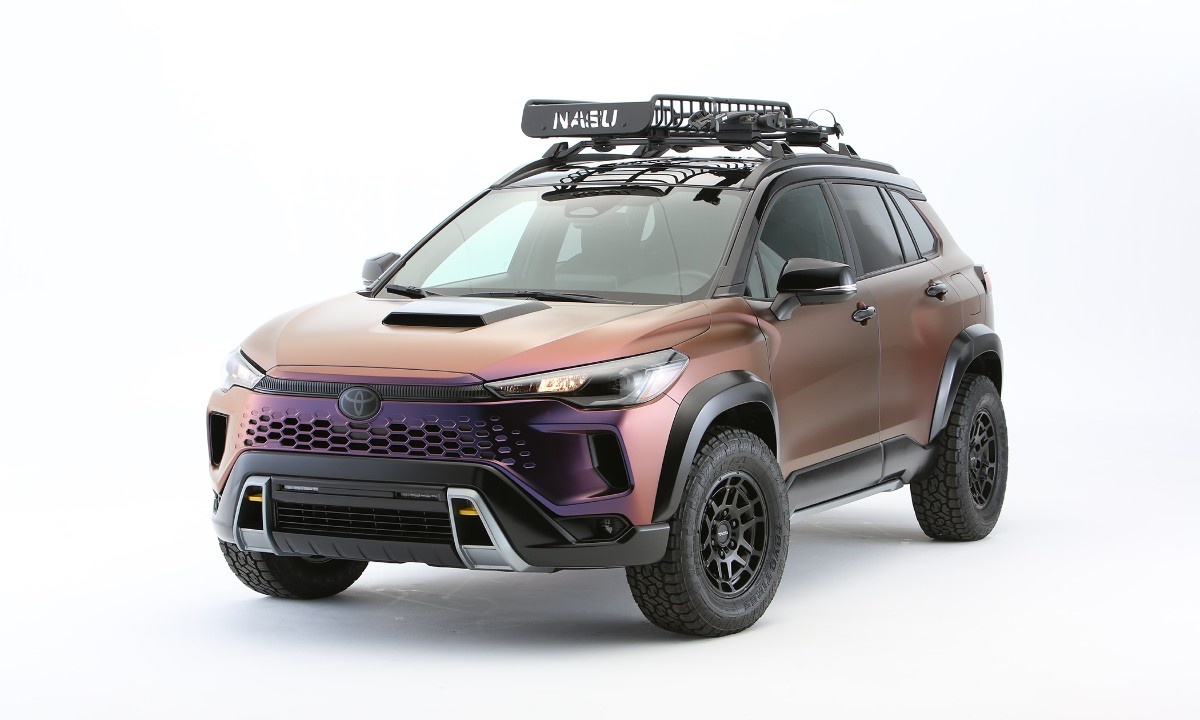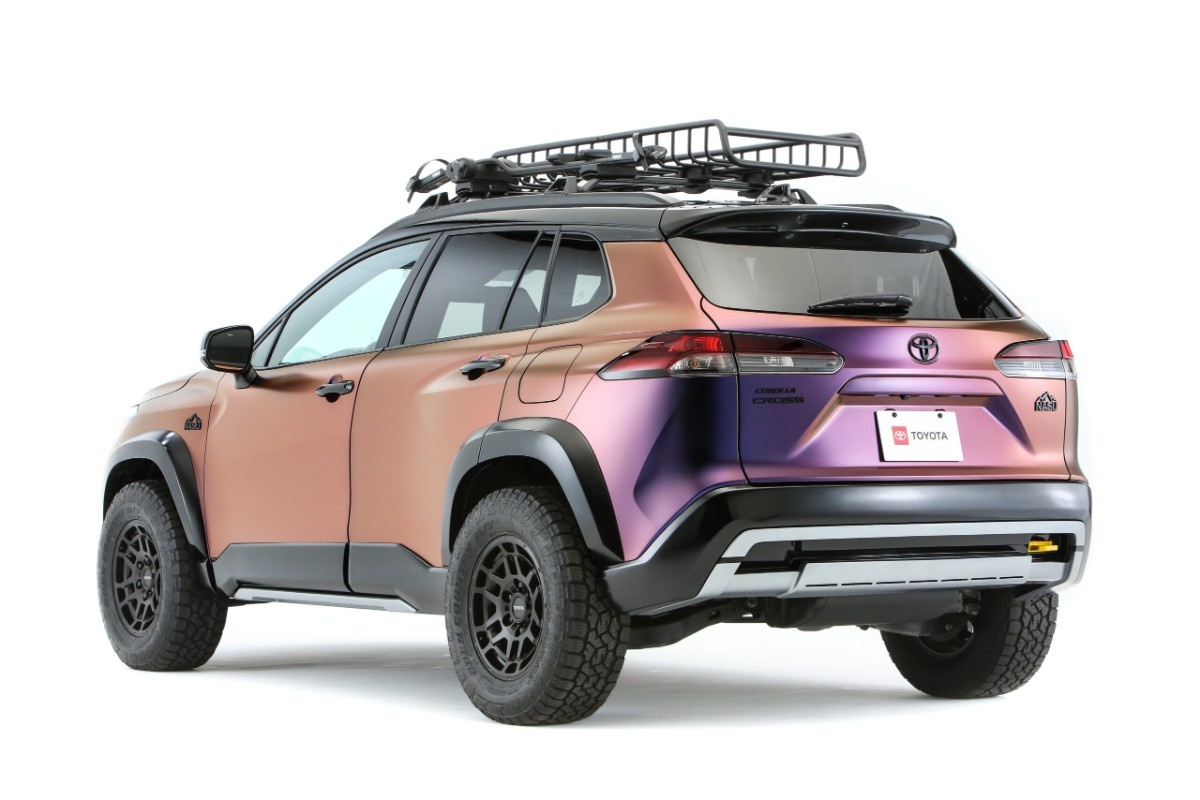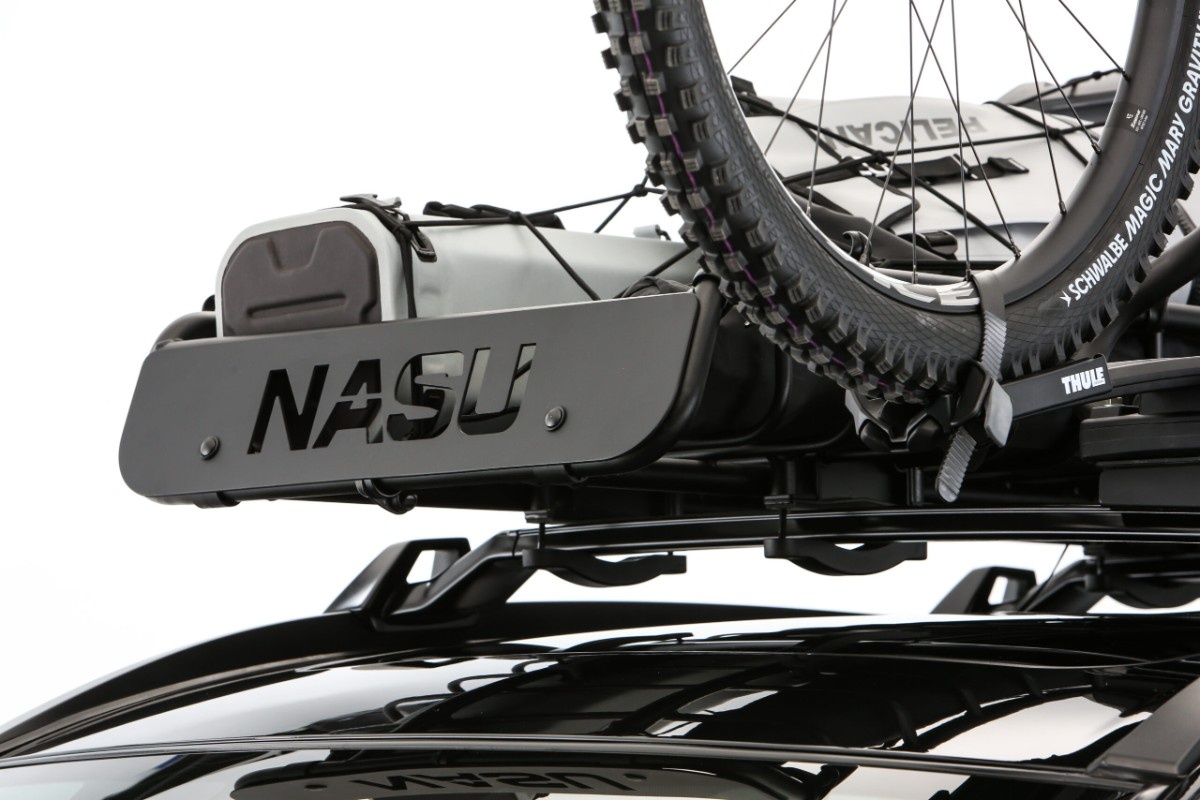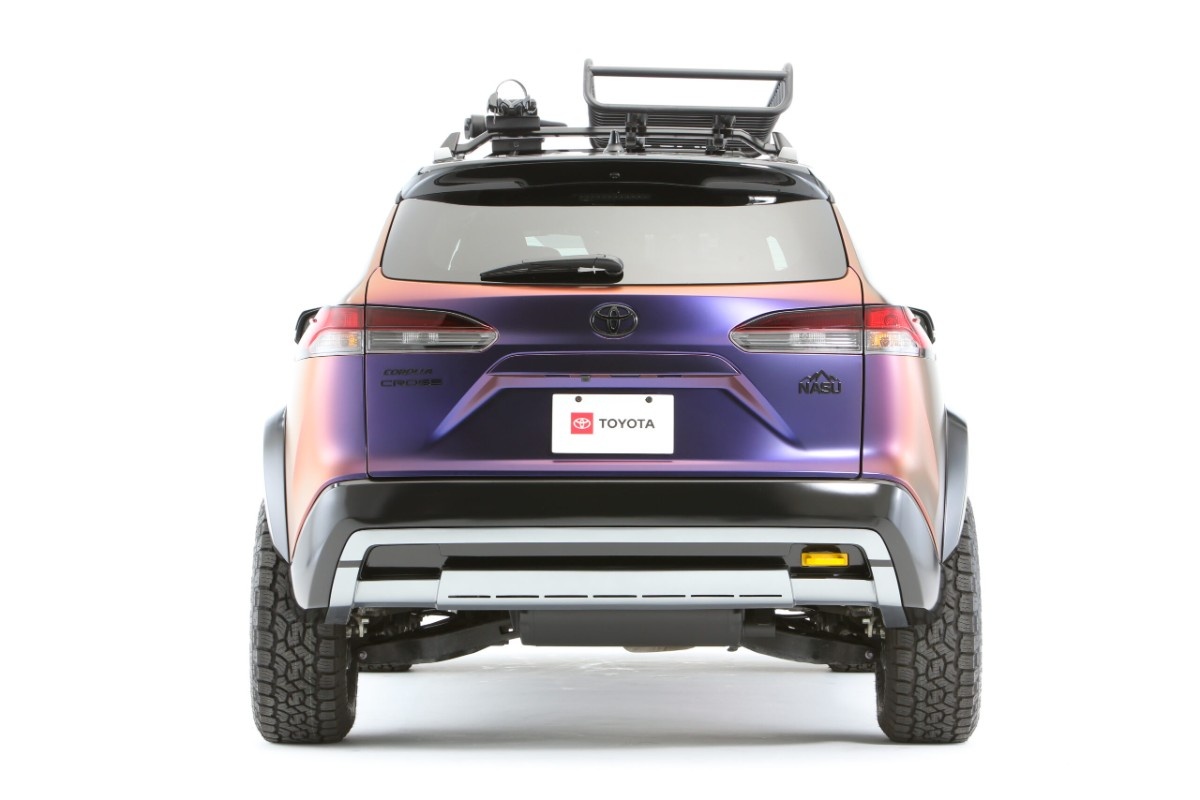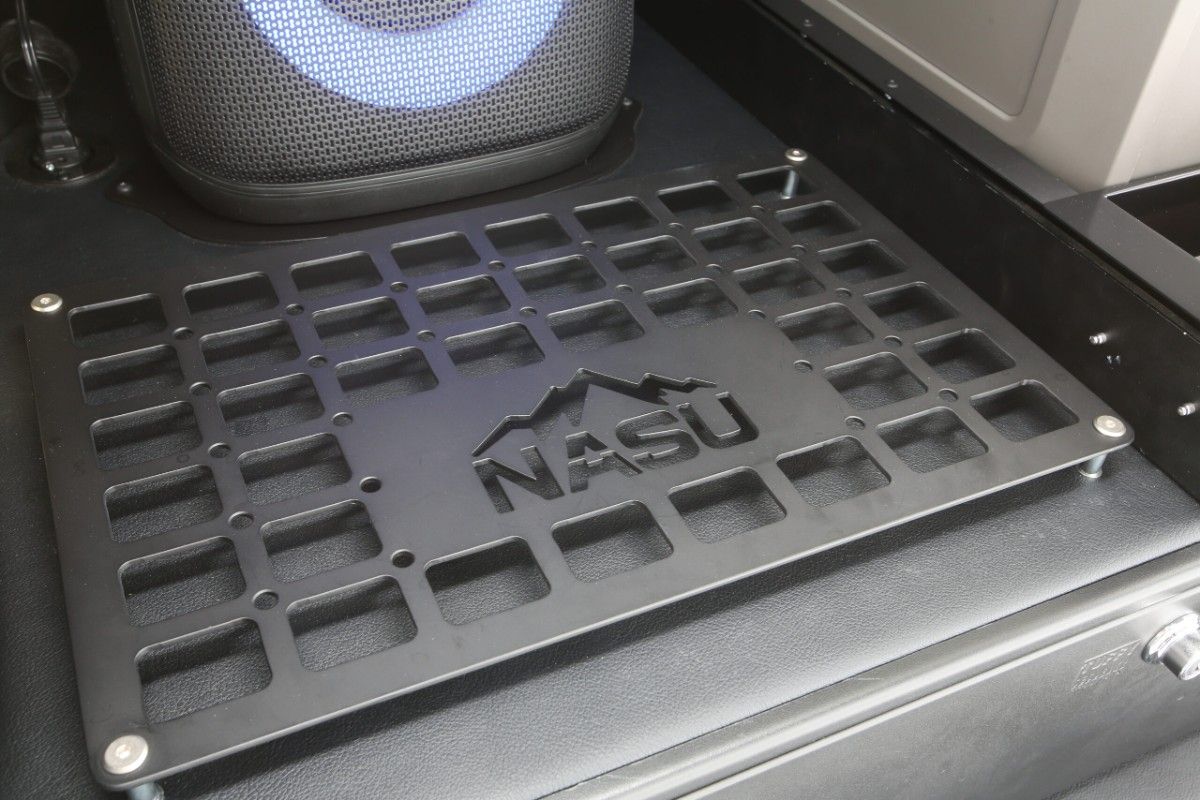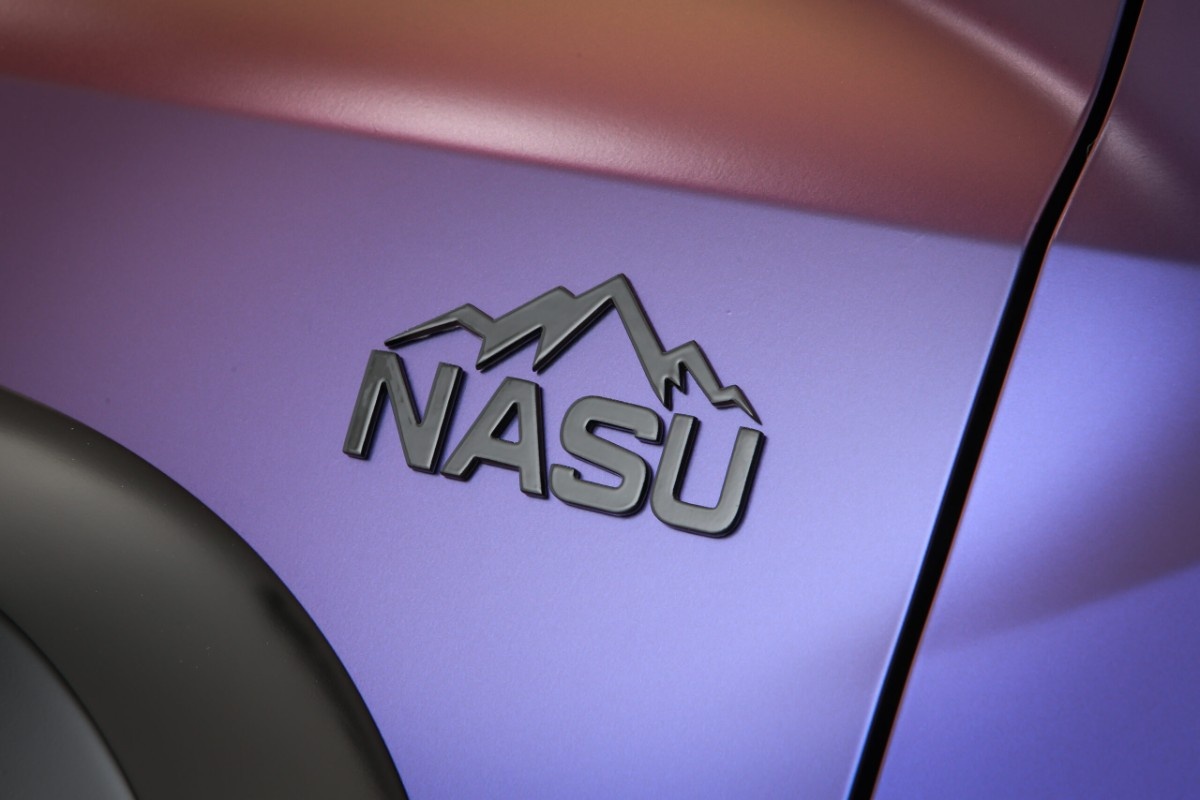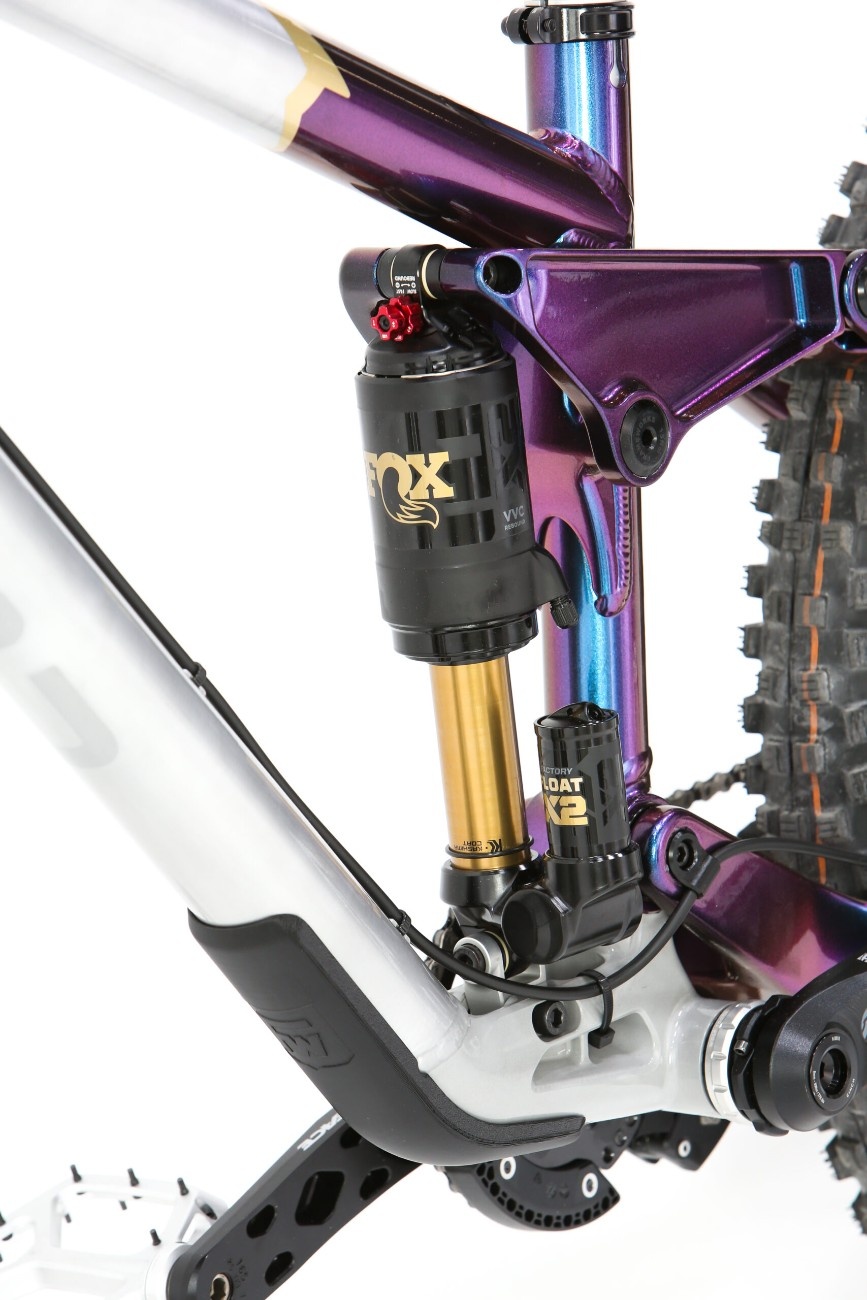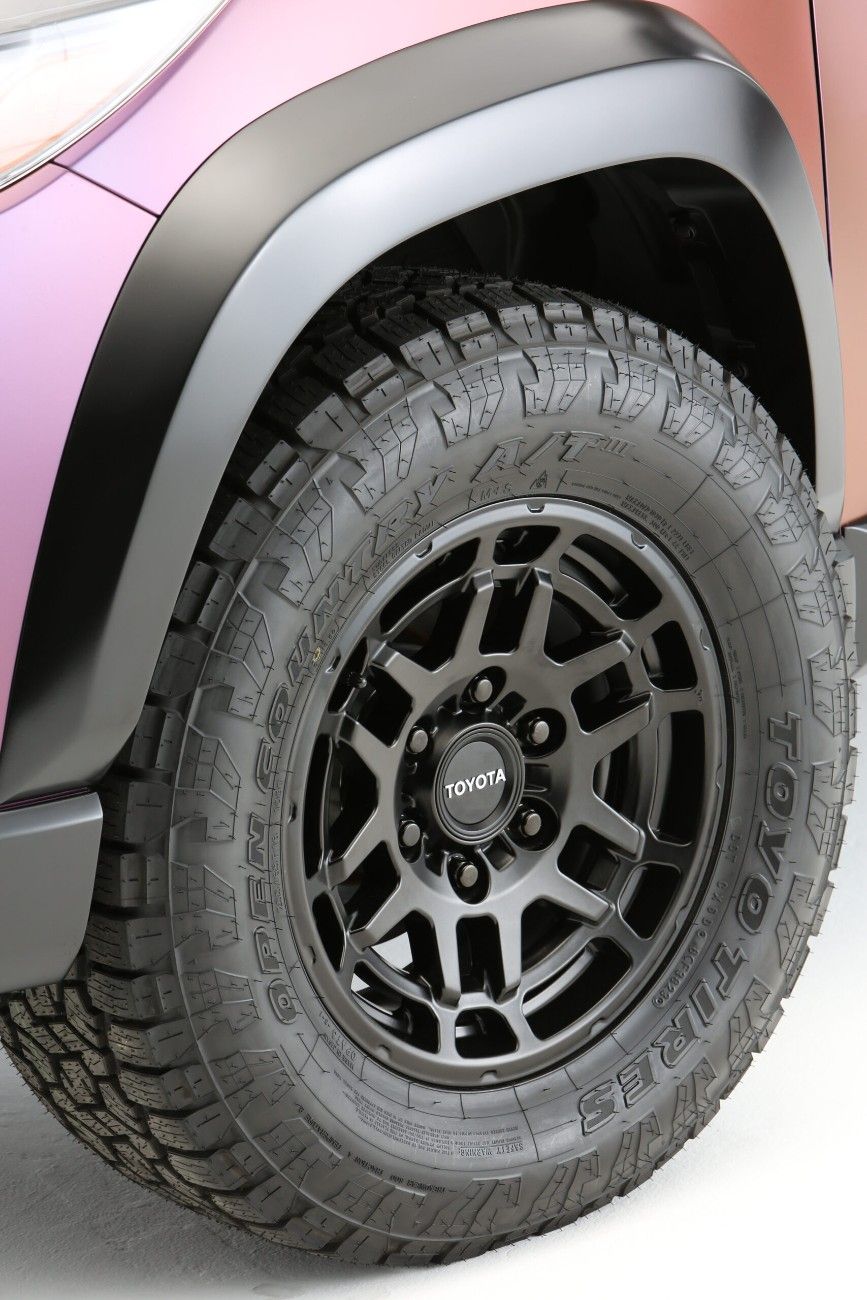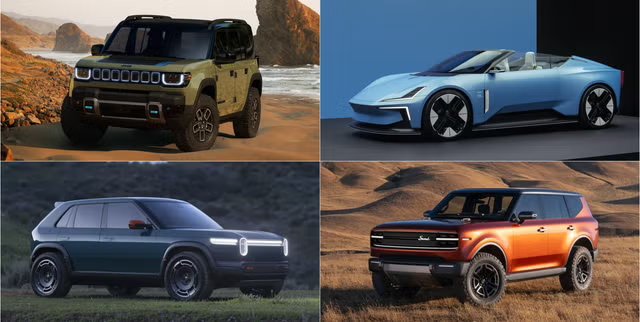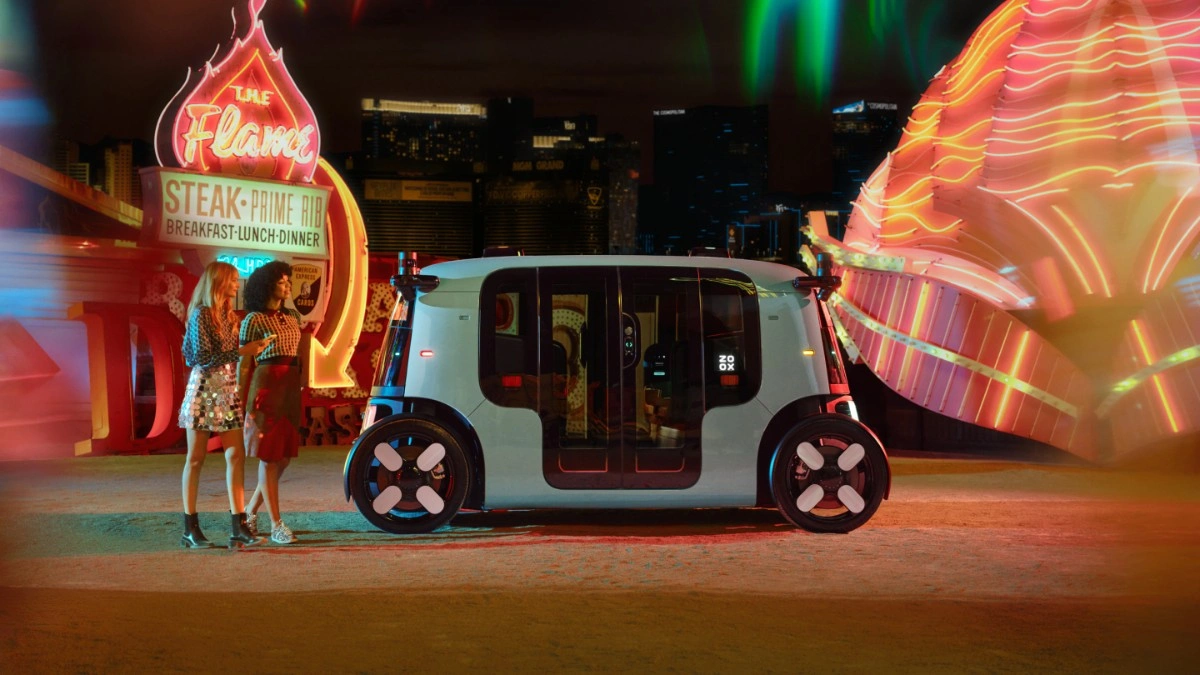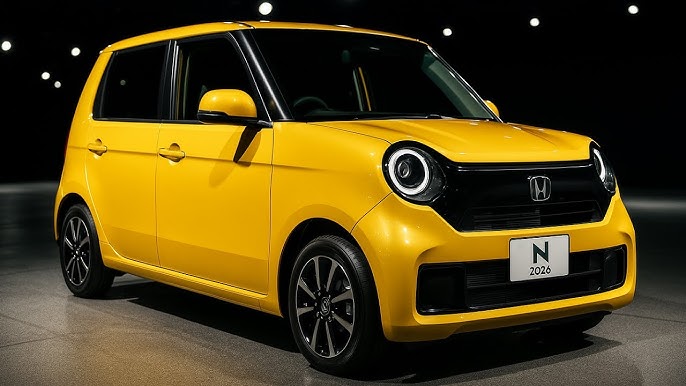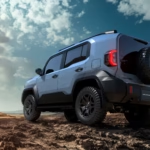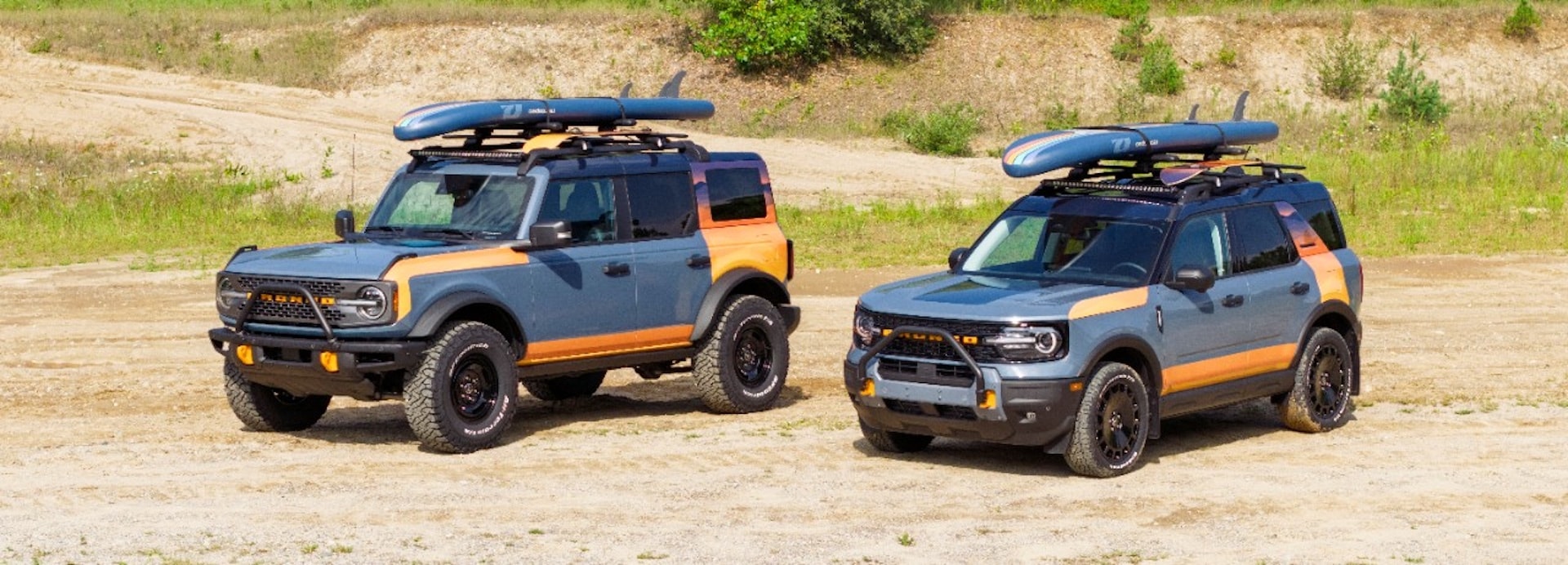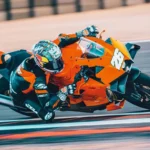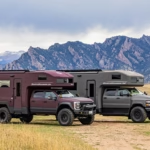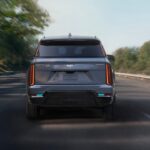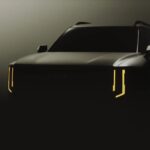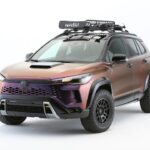Toyota’s Corolla Cross Gets the SEMA Treatment: Meet the Nasu Edition Hybrid That Wants to Hit the Trails
Las Vegas just got a glimpse of something nobody expected from Toyota’s compact crossover lineup. At the 2025 SEMA Show, the automaker unveiled the Corolla Cross Hybrid Nasu Edition—a one-off concept that transforms the typically urban-focused crossover into a purple-wrapped, lift-kitted overlanding machine inspired by a Japanese mountain and apparently, an eggplant.
Yeah, you read that right. Eggplant.
This isn’t some quick vinyl wrap job and bigger tires thrown together the week before the show. Toyota’s Service Parts and Accessories Development (SPAD) team spent months engineering this build, juggling CAD design, 3D printing, CNC machining, and coordinating work across multiple facilities while simultaneously managing hundreds of other accessory programs. The result is a Corolla Cross that looks ready to tackle fire roads and camping trips instead of grocery runs and school pickups.
The Name Game: Mountains, Eggplants, and Achievement
Before diving into hardware, let’s unpack the name because it’s more layered than you’d expect. “Nasu” primarily references Mt. Nasu in Japan’s Tochigi Prefecture—a volcanic mountain area famous for hiking trails, natural hot springs, and outdoor recreation. It’s exactly the kind of destination weekend warriors dream about visiting with a properly equipped vehicle.
But here’s where it gets interesting: “nasu” as a verb in Japanese means “to achieve” or “to accomplish.” Steve Park, senior product planner for Toyota and Lexus Vehicle Accessories, explained the dual meaning: “While the inspiration for this build is the adventurous spirit of Mt. Nasu in Japan, ‘nasu’ as a verb in Japanese also means ‘to achieve.’ We hope this build inspires others to build, to experience, and to achieve.”
And if that wasn’t enough linguistic complexity, “nasu” is also the Japanese word for eggplant. Toyota leaned into this with the concept’s striking purple exterior wrap—a bold choice that ensures this Corolla Cross won’t blend into any parking lot. Whether you see it as mountain-inspired, achievement-focused, or vegetable-themed probably says more about you than the vehicle.
Powertrain: Hybrid Efficiency Meets Adventure
The Nasu Edition keeps the standard 2026 Corolla Cross Hybrid’s powertrain completely stock under the hood. That means a 2.0-liter Atkinson-cycle four-cylinder engine working alongside three electric motors to produce a combined 196 horsepower. Power routes through Toyota’s electronically controlled continuously variable transmission to an all-wheel-drive system.
This hybrid setup prioritizes efficiency over raw performance, which makes sense given the Corolla Cross’s typical buyer profile. EPA estimates for the standard 2026 Corolla Cross Hybrid aren’t finalized yet, but the 2025 model delivered 37 mpg combined (41 city/38 highway) in AWD configuration. That efficiency becomes genuinely useful when you’re heading into remote areas where gas stations get scarce.
The electric motor can also handle low-speed maneuvering on its own, which could prove handy when setting up camp or navigating tight trail situations where you want precise speed control without constantly feathering a gas pedal. Total system output of 196 hp won’t win any drag races, but it’s adequate for a vehicle weighing around 3,600 pounds once you account for all the added gear and modifications.
Suspension and Stance: Lifting a Crossover the Right Way
Getting proper ground clearance meant custom suspension work. SPAD engineered a lift kit specifically for this build, though Toyota hasn’t disclosed exact lift measurements. Based on photos, the increase appears to be roughly 2-3 inches over stock ride height.
Stock ground clearance on a 2026 Corolla Cross measures 8.1 inches. Add even a modest 2-inch lift and you’re sitting at 10+ inches of clearance—legitimately useful for clearing obstacles on unmaintained forest roads and mild trails. This isn’t crawling Moab slickrock territory, but it dramatically expands where a Corolla Cross can reasonably venture compared to stock.
The lift works in conjunction with new wheels and tires. Toyota fitted custom truck wheels (likely borrowed from Tacoma parts bins based on the styling) wrapped in Toyo Open Country A/T III all-terrain rubber. The Open Country A/T III is a popular choice for light-duty off-road use, offering aggressive tread patterns for dirt and gravel while maintaining reasonable road manners and longevity on pavement.
Tire size wasn’t specified, but photos suggest something in the neighborhood of 225/65R17 or possibly 235/60R18—larger diameter than stock while maintaining reasonable sidewall height for some cushion against sharp rocks. The beefier tire sidewalls also allow running lower pressures on trails for improved traction and ride quality without risking wheel damage.
Exterior Modifications: Function Meets Aggressive Styling
The Nasu Edition wears a completely custom body kit that transforms the Corolla Cross’s otherwise conservative styling into something far more purposeful. A modified hood scoop—likely non-functional but visually striking—sits prominently up front. The aggressive front fascia treatment and revised lower bumper provide improved approach angles compared to the stock plastic cladding.
Rock sliders run along the rocker panels, protecting the body from trail damage while providing a sturdy step for accessing the roof rack. These aren’t decorative trim pieces—they’re structural components designed to take impacts from rocks and stumps without transferring force into the body panels or frame.
Up top, Toyota installed an articulating roof rack system with integrated cargo basket. The articulation feature is particularly clever, allowing the rack to tilt or slide for easier loading and unloading of gear without needing a step stool or climbing onto the vehicle. A custom downhill mountain bike—specifically chosen to honor mountain bike Junior World Champion Asa Vermette—sits secured to the rack, emphasizing the build’s outdoor recreation focus.
The purple wrap covering the entire vehicle does more than just grab attention. Quality vinyl wraps protect the underlying paint from UV damage and minor scratches while allowing for complete customization. If the owner eventually tires of eggplant purple (though who could?), the wrap can be removed to reveal factory paint underneath.
Lighting: Seeing and Being Seen
SPAD addressed lighting from multiple angles, adding both functional trail illumination and aesthetic touches. Modified Toyota lightbars mount to the front and rear, likely leveraging existing Toyota accessory components adapted for this specific application. Upgraded fog lamps improve visibility during dusty trail conditions or foggy mountain mornings near those Mt. Nasu hot springs.
Custom illuminated door sills, puddle lamps, and cargo area sills light up entry and exit points. This isn’t just decorative—when you’re camping in remote areas without streetlights, having well-lit access points makes a genuine difference in safety and convenience. The lighting package extends the vehicle’s usability into nighttime camp setup and gear organization.
Interior and Cargo Solutions: Organization for Extended Trips
The real genius of this build shows up in the cargo area, where SPAD installed a custom drawer system with a refrigerator on a sliding tray. Overlanding enthusiasts will immediately recognize the value here—organized storage prevents gear from becoming a jumbled mess on rough roads, while the sliding fridge provides easy access to cold drinks and perishable food without unpacking everything.
Custom drawer systems like this typically feature locking mechanisms to prevent drawers from sliding open during transit, plus dividers and compartments for organizing recovery gear, tools, cooking equipment, and camping supplies. The refrigerator integration is particularly slick, allowing the unit to slide out for access while remaining securely mounted and connected to the vehicle’s 12V power system.
Inside the cabin, SPAD added “thoughtful touches to align the cabin with the vehicle’s adventurous persona,” though specific interior modifications weren’t detailed in Toyota’s release. Based on typical SEMA builds, this likely includes all-weather floor mats, upgraded cargo liners, additional USB charging ports, and possibly custom seat covers in materials that handle dirt and moisture better than standard upholstery.
The SPAD Process: How Concept Builds Actually Happen
Toyota’s Service Parts and Accessories Development team operates differently than typical aftermarket shops building SEMA vehicles. SPAD manages an entire portfolio of accessory programs for Toyota and Lexus vehicles, meaning the engineers working on the Nasu Edition were simultaneously developing production accessories for dozens of other models.
The build process leveraged modern manufacturing technology extensively. CAD (Computer-Aided Design) software allowed engineers to model modifications digitally before cutting metal. 3D printing enabled rapid prototyping of custom parts, letting the team test fitment and make design changes without expensive tooling. CNC (Computer Numerical Control) machining produced the final metal components with precision tolerances.
Assembly happened across multiple locations, with different teams handling specific components before everything came together for final integration. This distributed approach mirrors how Toyota develops production vehicles, applying that same engineering rigor to a one-off concept.
The result is a concept that feels cohesive rather than cobbled together. Every modification integrates properly with surrounding components, nothing looks like an afterthought, and the overall execution demonstrates genuine engineering effort rather than just bolting on parts for visual impact.
SEMA 2025: Powered by Possibility
The Nasu Edition represents just one example of Toyota’s 2025 SEMA Show presence. The automaker is showcasing over two dozen concept builds under the theme “Powered by Possibility,” with vehicles spanning every powertrain configuration Toyota currently produces or is developing.
That lineup includes traditional gasoline internal combustion engines (ICE), hybrid electric vehicles (HEV like the Nasu Edition), plug-in hybrids (PHEV), battery electric vehicles (BEV), and fuel cell electric vehicles (FCEV). The diversity demonstrates Toyota’s multi-pathway approach to electrification rather than betting everything on a single technology.
Mike Tripp, group vice president of Toyota Marketing, positioned the Nasu Edition as proof that Toyota’s adventurous spirit extends beyond traditional trucks and body-on-frame SUVs: “This concept demonstrates that possibility isn’t limited to our trucks and body-on-frame SUVs—it extends across our lineup. At Toyota, we believe in building vehicles that empower our customers to do more, explore more, and achieve more, and the Nasu Edition is a bold example of that philosophy.”
The Corolla Cross Nasu Edition will be displayed November 4-7 at the Las Vegas Convention Center in Toyota’s booth (Central Hall, Booth 22200). SEMA draws over 160,000 industry professionals annually, making it the premier venue for automotive aftermarket companies, manufacturers, and enthusiasts to preview new products and concepts.
What This Means for Actual Corolla Cross Owners
Here’s the important question: will any of these modifications become available as Toyota accessories you can actually buy?
Toyota’s standard disclaimer applies: “Vehicle referenced is a special project prototype vehicle, modified with parts and/or accessories not available from Toyota that may void the vehicle’s warranty, may negatively impact vehicle performance and safety, and may not be street legal.”
That said, SEMA concepts often preview accessories that eventually reach production. The development work SPAD invested in this build—particularly items like the roof rack system, rock sliders, lighting upgrades, and cargo organization components—suggests Toyota is gauging interest in adventure-oriented Corolla Cross accessories.
If customer response proves strong, expect to see some Nasu Edition elements appear in Toyota’s accessory catalogs over the next 12-24 months. The purple wrap and custom body kit probably won’t make it to production, but roof racks, all-terrain tire packages, and cargo organization systems are exactly the kind of bolt-on upgrades Toyota regularly offers.
The lift kit presents a trickier proposition. Toyota generally avoids selling suspension modifications that alter factory ride height and geometry due to warranty and liability concerns. However, they could potentially offer a wheel and tire package that provides modest additional clearance without suspension changes, similar to how the TRD Pro trucks use larger tires on stock suspension.
The Broader Context: Crossovers Go Off-Road
The Corolla Cross Nasu Edition fits into a broader industry trend of manufacturers exploring off-road variants of traditionally urban vehicles. Subaru has built its entire brand around all-weather capability in car-based platforms. Mazda recently introduced the CX-50 specifically targeting more adventurous buyers than the CX-5. Honda positions the Passport as its adventure-ready two-row SUV.
What makes Toyota’s approach interesting is the application of this thinking to the Corolla Cross—one of the brand’s most affordable and practical offerings. The base 2026 Corolla Cross starts around $28,000, with the Hybrid AWD configuration climbing to roughly $33,000. That accessible pricing puts capable transportation within reach of younger buyers and budget-conscious adventurers who might not be able to afford a $50,000+ 4Runner.
Even adding $5,000-7,000 worth of accessories (a realistic estimate for the Nasu Edition’s modifications if they were production items) would keep the total under $40,000—still substantially less than traditional off-road-oriented SUVs while providing 95% of the capability most owners actually need.
Practical Limitations and Realistic Expectations
Let’s be clear about what the Corolla Cross Nasu Edition is and isn’t. Despite the aggressive styling and capable modifications, this remains a unibody crossover with a hybrid powertrain optimized for efficiency rather than rock crawling.
The Corolla Cross has no low-range transfer case for extreme low-speed control on steep descents. The AWD system is on-demand rather than full-time, designed primarily for inclement weather rather than continuous off-road use. Ground clearance, even with the lift, remains modest compared to body-on-frame vehicles like the 4Runner or Tacoma.
Approach, departure, and breakover angles—critical measurements for off-road capability—are limited by the Corolla Cross’s basic architecture. The front and rear overhangs are longer than purpose-built off-roaders, meaning you’ll scrape bumpers sooner when cresting hills or dropping into dips.
None of this makes the Nasu Edition concept pointless. It just defines realistic use cases: maintained forest roads, established camping areas, gravel mountain passes, beach access routes, and light trail duty. This isn’t a Rubicon Trail vehicle, and it was never intended to be one.
For the vast majority of people who claim they want off-road capability, the Nasu Edition’s abilities would prove more than sufficient. Most “off-roading” consists of driving dirt roads to trailheads, accessing remote camping spots, and occasionally dealing with snow or mud. The Corolla Cross can handle all of that competently while still delivering excellent fuel economy and comfortable highway manners during the 95% of miles spent on pavement.
The Eggplant Elephant in the Room
We need to address the purple. Toyota committed hard to the eggplant theme, and it’s going to be polarizing. Some will love the bold, unconventional choice that ensures this Corolla Cross stands out in a sea of silver, white, and black crossovers. Others will find it too loud, too purple, too… eggplanty.
The choice makes sense from a SEMA show floor perspective, where hundreds of vehicles compete for attention from attendees walking miles of exhibit halls. Subtle doesn’t work at SEMA. You need something that stops people mid-stride and makes them turn their heads.
Outside the convention center though? Purple might not be everyone’s first choice for a daily driver. The beauty of a vinyl wrap is that it’s reversible—but the commitment to the joke is admirable. Toyota could have gone safe with matte black or military green. Instead, they leaned into the linguistic connection and wrapped the whole thing in glossy purple. You have to respect the dedication.
What Happens After SEMA
SEMA concepts typically follow one of several paths after the show. Some get returned to stock configuration and sold, others enter Toyota’s marketing fleet for auto shows and media events, and occasionally one becomes a permanent museum piece or executive perk.
The Corolla Cross Nasu Edition will likely spend 2026 making appearances at Toyota-sponsored events, outdoor lifestyle festivals, and possibly cycling competitions given the Asa Vermette mountain bike connection. These appearances serve dual purposes: generating ongoing publicity while gathering direct consumer feedback about which features resonate most strongly.
Toyota’s product planners will be watching social media engagement, tracking which photos get shared most widely, and monitoring comments to understand what people actually want. If the roof rack system generates significant interest, that’s a signal to fast-track it for production. If everyone focuses on the purple wrap and ignores the functional upgrades, that tells a different story.
The most successful SEMA concepts spawn entire accessory lines. Look at Toyota’s TRD Pro offerings, which evolved from SEMA concepts into full production trim levels with dedicated followings. Could we eventually see a “Corolla Cross Nasu” or “Corolla Cross Adventure” trim joining the lineup with some of these modifications as factory options? It’s not impossible if demand proves sufficient.
For the Adventurous Corolla Cross Owner
If you currently own a Corolla Cross (or are considering buying one) and the Nasu Edition concept speaks to you, several modifications are achievable without waiting for Toyota to offer production accessories.
Quality aftermarket roof racks from companies like Thule, Yakima, and Rhino-Rack fit the Corolla Cross now. All-terrain tires in slightly larger sizes can be fitted to stock wheels without modifications. Rock sliders and skid plates designed for similar-sized crossovers can be adapted with custom brackets.
Cargo organization systems—drawer setups, fridge slides, and modular storage—are available from overlanding specialists like Goose Gear, Decked, and Front Runner. Many of these companies offer vehicle-specific solutions or universal systems that fit various platforms.
The lift kit remains the biggest challenge. Suspension modifications require careful engineering to maintain factory ride quality, handling characteristics, and warranty coverage. A few specialty shops offer mild lift kits for the Corolla Cross platform, but options remain limited compared to more popular off-road vehicles.
Your best approach? Start with tires, roof rack, and cargo organization—bolt-on accessories that improve capability without impacting warranty or requiring permanent modifications. See if that meets your needs before committing to more invasive changes like suspension lifts.
See this also – Toyota Land Cruiser FJ: Hilux-Based Compact SUV Not Coming to America | Full Specs | 2025
